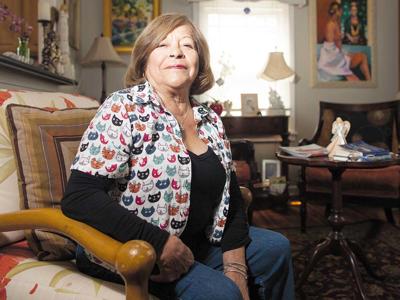FROM PASSING OUT FOOD TO WORKERS IN THE SALINAS VALLEY AS A TEENAGER to housing families and women in unstable environments, 80-year-old Socorro Hinojosa hasn’t lost her passion for helping people. “When I wake up I just can’t lie in bed,” she says. “I’m thinking, what can I do today?”
It began in farm fields, where she worked on occasion during her summer breaks from school growing up in Soledad. After becoming intimately familiar with working conditions, she joined Cesar Chavez in marching for labor rights in the ’70s.
That same empathy came in handy when she began working at Monterey County Office of Education’s Head Start program. “I saw so many people and kids dealing with all sorts of issues,” she recalls, citing homelessness, child abuse and more in the lives of young children. “It was an eye-opener.”
After joining the Monterey Peninsula Unified School District administration in the early 2000s, her horizons broadened again: “The thing about working here is that you’re exposed to so many kinds of people and you have to help them.”
Her move coincided with the migration of many Vietnemese families to the Monterey Peninsula. “They couldn’t speak the language, but you had to try to listen to them.” And try she did.
She developed a philosophy to present the options, rather than force anyone to seek help from nonprofit or government resources they qualified for. “It’s rewarding to help someone from another culture and another place, because you learn to respect them and their decisions,” she says. “Most of the time, people just didn’t know the help was out there.”
She retired in 2008, but did not stop extending support and options to people in need. She started inviting people in unstable situations to stay in her Seaside home, living in the TKTKTKT. Sometimes it was women in abusive relationships, sometimes they were homeless and sometimes they were terminally ill. They’ve stayed for months, even years, at a time.
“I let them take their time,” Hinojosa says.
Her husband, Noe, jokes that each new face that arrives at their door will be the last they will host. Her rebuttal: “They’re not.” But the benefit of putting people up shows results, she adds; one homeless father and son who lived with them in Seaside for a full year recently moved out, and secured housing.
Sometimes Hinojosa’s work means directing people to resources – she provides ministry services at Community Hospital of the Monterey Peninsula and connects families with services at St. Francis Xavier Church as a catechist – and sometimes offering the resource herself, even if it’s a place to crash.
“People know where I am,” Hinojosa says. “The most important thing is that they’re getting the help they need.”



(0) comments
Welcome to the discussion.
Log In
Keep it Clean. Please avoid obscene, vulgar, lewd, racist or sexually-oriented language.
PLEASE TURN OFF YOUR CAPS LOCK.
Don't Threaten. Threats of harming another person will not be tolerated.
Be Truthful. Don't knowingly lie about anyone or anything.
Be Nice. No racism, sexism or any sort of -ism that is degrading to another person.
Be Proactive. Use the 'Report' link on each comment to let us know of abusive posts.
Share with Us. We'd love to hear eyewitness accounts, the history behind an article.